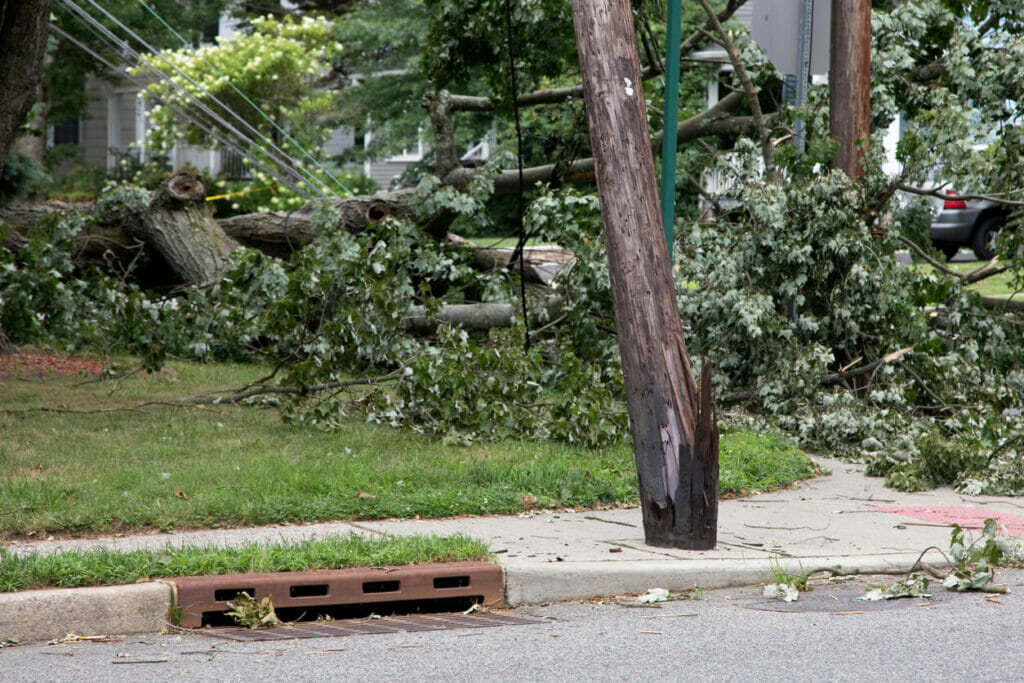Most communities don’t think about trends impacting insurance (in fact, they’d rather not think about insurance at all). But board members are very aware of how quickly costs have increased.
Table of contents
A brief overview of association insurance policies
HOA or condo insurance—often referred to as a master policy—provides coverage for liability and property damage that the association would otherwise have to pay for out of pocket.
Most HOAs are required by their bylaws to carry at least some insurance, and many states mandate HOA insurance. For example, in Florida, condominium associations are required to have adequate property insurance. Coverage must be based on the replacement cost of the property, even if the declaration of condominium provides otherwise. The replacement cost must be determined by an independent insurance appraisal at least once every 36 months.
Legislation in Arizona requires coverage for physical damage to the common property of at least 80% of the property’s value and general liability insurance in an amount to be determined by the board.
The Uniform Common Interest Ownership Act (UCIOA), adopted in eight states including Washington, Minnesota, Delaware and Connecticut, has similar requirements and adds mandatory fidelity insurance.
Both Arizona and the UCIOA include the caveat that insurance must be obtained “to the extent reasonably available.” If the board decides that the otherwise required coverage is “not reasonably available,” it must inform members that no coverage is in place.
Coverage
A typical master policy covers shared assets and neighborhood amenities governed by the association. This can include things like community pools, parks, playgrounds, ponds, gardens, clubhouses and fitness areas. It may also cover:
- Exterior walls, roofs, stairwells, hallways, elevators and lobbies of condo buildings
- Injuries that occur in common areas
- Acts of vandalism
Things insurance may not cover
Association insurance will not cover property damage or liability for injuries that happen inside of a home or unit. Furthermore, it typically excludes coverage for any damage caused by fire, floods or earthquakes. Don’t expect the association’s insurance to cover:
- Physical damage to a house
- Physical damage to the inside of a condo unit
- Personal belongings that are damaged or stolen
- Liability expenses that a member is responsible for
- Claims that exceed insurance policy limits
- A vehicle that is stolen from the association’s parking lot
Trends
The Foundation for Community Association Research published a survey about insurance coverage trends in April of 2023. The organization received answers from 895 respondents representing at least 10,000 community associations in the United States.
Participants consisted of managers, board members, and a small percentage of insurance and risk management professionals.
Community size
Of the communities surveyed, most report being small to mid-sized developments.
64% have 250 or fewer units or doors
24% have between 251 – 999 units or doors
12% have more than 1,000 units or doors
Types of insurance
Almost all associations have property and casualty insurance as well as directors and officers (D&O) insurance.
98% of communities carry property and casualty insurance. But 11% of communities said that their property and casualty coverage was canceled or not renewed.
Interestingly, insurance professionals suggest that percentage of cancelations might be higher.
83% said they are seeing a significant number of clients canceling property and casualty insurance. 10% said they are not seeing this trend.
98% of communities carry directors and officers insurance
84% carry fidelity and crime insurance
46% carry cybersecurity insurance
In addition to having insurance for the community, 47% of condominium associations that participated in this survey required owners to carry individual HO-6 policies. This policy can cover liability claims made against owners, damage to individual units and personal belongings, and additional living expenses if the owner is unable to stay in their residence due to an insurable incident. Unfortunately, this policy may not cover damages caused by earthquakes, flooding, or termites.
Extent of coverage
Most property and casualty policies will pay out the value of common property to associations if it needs to be replaced. But damage caused by a natural disaster is often excluded.

74% said their property and casualty policy includes coverage of 100% replacement value for common property.
56% said their policy includes water damage
54% said windstorm coverage is included
35% said hurricane coverage is included
27% said earthquake coverage is included
26% said flood coverage is included
26% said collapse coverage is included
21% said wildfire coverage is included
Price increases
When asked if their property and casualty insurance premium increased during the most recent or current renewal:
91% of communities said yes
6% said no
3% were unsure
Insurance and risk professionals confirm this increase.
96% said they witnessed premium increases among their community association clients.
Rate increases
This is the thing that makes associations nervous, and unfortunately, rates have spiked. When asked how much money per owner premium costs increased (per year):
17% of respondents said the question was not applicable
45% said the increase was $100 or less per owner
24% said between $101 – $500 per owner
5% said between $501 – $1,000 per owner
4% between said $1,001 – $2,000 per owner
5% said more than $2,000 per owner
Insurance professionals estimate that premiums, on average, have risen anywhere from 11% up to a whopping 50%.
55% of respondents said premiums are up 11% – 25%
34% of respondents said premiums are up 26% – 50%
Keeping up with costs
Since canceling insurance policies is not recommended, and in some cases, not possible, the majority of communities were forced to increase assessments to keep up with the rising costs of insurance.
50% of communities said they increased individual assessments
43% said they took more money from the operating funds
7% said they levied a special assessment
2% said they took out a line of credit
2% used contingency funds
1% dipped into reserve funds
5% said they turned to other solutions
6% said the question was not applicable
A bit of good news
When it comes to deductibles, the majority of communities said their insurers were not enforcing high deductibles for the renewal of property and casualty coverage.
24% said high deductibles were forced
62% said high deductibles were not forced
12% were unsure
Conclusion
Condo and HOA communities everywhere are feeling the pressure of rising insurance costs. Shopping around for a better rate isn’t proving to be helpful, and canceling coverage altogether is simply too risky for most associations.
Experts who specialize in association insurance advise condos and HOAs to make sure their broker specializes in community associations to ensure the property has the right advice in order to make the best decisions possible.
Communities may also need to consider switching to a “bare walls” insurance policy, but this move will likely require member support.
Finally, increasing deductibles to lower premiums is an option, but the community must be prepared to absorb a greater out-of-pocket loss if something occurs. There are no easy answers, so talk with your board and manager to explore the pros and cons of all options.


